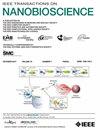Synthesis of Heteroatom-Doped Polymer-Coated Nanomaterials for Slow and Controlled Drug Release in the Physiological Microenvironment
IF 4.4
4区 生物学
Q1 BIOCHEMICAL RESEARCH METHODS
引用次数: 0
Abstract
This study aimed to develop doped carbon dots and coat them with carboxyl-polymer to explore their applications in imaging living tissue cells and achieving targeted drug release, particularly for tumor therapy. The synthesis of NP-CDs involved a one-pot hydrothermal reaction of seaweed powder, ethylene diamine, and phosphoric acid at atmospheric pressure. Subsequently, the NP-CDs were coated with carboxyl-mounted PEG to create PEG@NP-CDs, serving as a nano carrier for delivering the anti-cancer drug Doxorubicin (DOX). The drug delivery capabilities of PEG@NP-CDs were assessed, and their sensitivity to variations in pH value was studied. The hydrothermal reaction successfully yielded NP-CDs with distinctive fluorescence properties, exhibiting green fluorescence at 430 nm and varying emission peaks depending on the excitation wavelength used. The subsequent coating of NP-CDs with carboxyl-mounted PEG resulted in PEG@NP-CDs, which demonstrated biocompatibility and potential for drug delivery applications. The MTT assay confirmed the high biocompatibility of PEG@NP-CDs, rendering them suitable for biomedical applications. The study successfully developed a straightforward method to synthesize CDs doped with nitrogen and phosphorus, which exhibited green fluorescence and sensitivity to excitation wavelengths. These nanomaterials have potential for imaging living tissue cells and achieving slow drug release. Their drug delivery capabilities, especially pH sensitivity, make them promising for targeted therapy, particularly in tumors. The biocompatibility of PEG@NP-CDs further supports their safe biomedical use. Overall, PEG@NP-CDs offer a valuable tool for simultaneous imaging and drug delivery, with promising applications in tumor detection and therapy.杂原子掺杂聚合物包被纳米材料在生理微环境下缓释药物的合成。
目的:本研究旨在开发掺杂碳点,并在其表面涂覆羧基聚合物,探索其在活组织细胞成像和靶向药物释放方面的应用,特别是在肿瘤治疗方面。方法:以海藻粉、乙二胺、磷酸为原料,在常压下一锅水热反应合成NP-CDs。随后,将NP-CDs涂覆在羧基上的PEG上,形成PEG@NP-CDs,作为递送抗癌药物阿霉素(DOX)的纳米载体。评估PEG@NP-CDs的给药能力,并研究其对pH值变化的敏感性。结果:水热反应成功制备出具有独特荧光特性的NP-CDs,在430 nm处呈现绿色荧光,并根据激发波长的不同表现出不同的发射峰。随后在NP-CDs上涂覆羧基固定的PEG,得到PEG@NP-CDs,证明了生物相容性和药物传递应用的潜力。MTT试验证实了PEG@NP-CDs的高生物相容性,使其适合生物医学应用。结论:本研究成功地开发了一种直接合成氮磷掺杂CDs的方法,该方法具有绿色荧光和对激发波长的敏感性。这些纳米材料具有成像活组织细胞和实现缓慢药物释放的潜力。它们的药物输送能力,特别是对pH值的敏感性,使它们有望用于靶向治疗,特别是肿瘤治疗。PEG@NP-CDs的生物相容性进一步支持其安全的生物医学用途。总的来说,PEG@NP-CDs提供了一个有价值的同时成像和药物输送的工具,在肿瘤检测和治疗中有很好的应用。
本文章由计算机程序翻译,如有差异,请以英文原文为准。
求助全文
约1分钟内获得全文
求助全文
来源期刊

IEEE Transactions on NanoBioscience
工程技术-纳米科技
CiteScore
7.00
自引率
5.10%
发文量
197
审稿时长
>12 weeks
期刊介绍:
The IEEE Transactions on NanoBioscience reports on original, innovative and interdisciplinary work on all aspects of molecular systems, cellular systems, and tissues (including molecular electronics). Topics covered in the journal focus on a broad spectrum of aspects, both on foundations and on applications. Specifically, methods and techniques, experimental aspects, design and implementation, instrumentation and laboratory equipment, clinical aspects, hardware and software data acquisition and analysis and computer based modelling are covered (based on traditional or high performance computing - parallel computers or computer networks).
 求助内容:
求助内容: 应助结果提醒方式:
应助结果提醒方式:


